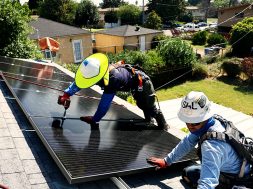
Chhattisgarh: ‘You can’t draw power from a solar lantern. Just light. Does that count as electricity?’
To meet 100% electrification target, villages in Chhattisgarh’s Maoist zone were given solar lanterns. That remains the story still
As night falls at the Cherpal Ashram, 15 km from the Bijapur district headquarters, the glow of tubelights begins to illuminate the residential quarters of students, and the ground with a volleyball net outside. When 12-year-old Santu Pottam first arrived at the school in April, it was this light that he had to get used to. In his village of Bodla Pusnar, deep inside the forests of Bijapur and in the crossfires of the State-Maoist conflict, there has never been electricity. Yet, in government records, Santu Pottam belongs to a village that has been “electrified”.
In April this year, Prime Minister Narendra Modi announced that all villages in India had been electrified, the last being Leisang village in Manipur. This has since become a bedrock of the BJP’s political campaigns, including in Chhattisgarh. On paper, the three districts of Dantewada, Bijapur and Sukma, hit by left-wing extremism, are 100 per cent electrified too. But in at least 80 villages across these districts, The Indian Express found, electricity means a 3-watt solar lantern.
Officials admit that the administration has no access to these villages given the security situation there. “The Government of India had set May as target for 100 per cent electrification. So we tried the solar option. In some villages, we put up a solar power plant, which distributes electricity to 10 homes through a grid, and in some a solar home system, which comes with two lights, a power point and a fan. The third option, where these two could not be given, was the solar lantern,” says a senior official.
According to the Deendayal Upadhyaya Gram Jyoti Yojana, any village where 10 per cent of the total household and public places like gram panchayats, schools and dispensaries have access to electricity is considered “electrified”.
Government data shows that four villages in Dantewada, 21 villages in Bijapur, and 55 villages in Sukma received the solar lanterns. Says Dantewada District Collector Saurabh Kumar, “These are places where machines have been burnt and workers beaten up during routine electrification. We hope to undertake grid or solar electrification as soon as the security situation improves.”
Ayaz Tamboli, who served as Bijapur Collector till April and is currently the Collector of Bastar, says, “PDS shops, haat bazaar and ashrams (schools) were used as points of distribution of these lanterns. Of the 3,000 lanterns that were ordered, 1,600 have been distributed.”
However, even in this distribution process, there are gaps. While as per government records, 38 families have been distributed solar lanterns in Bodla Pusnar, many say they have never seen one.
Twenty-five kilometres from Bijapur, Gangaloor panchayat has a row of ration shops, which were meant to distribute the lanterns. “We made villagers sign a form and gave them the lanterns. Some said they could not take the lanterns because the Maoists would not allow it… We told them to take the lanterns, that it didn’t matter if they took them home. Who will go and check? Some left them here in Gangaloor with relatives. Others may have just thrown them away,” says the shopowner.
In Bastar, officials struggle to define the distribution of these lanterns as “electrification”. Sukma District Collector Jay Prakash Mourya says this could be counted as “partial electrification”. “Over time, when people see the benefits of light in their villages, more people will approach us automatically,” he says.
At the Tamodi ashram, those ‘benefits’ are all around. Gangaloor has electricity, the ashram has lights and fans, its playground can be illuminated at night. Some of the shops in the local bazaar have televisions, and music systems that play Bollywood music. “Our village should have this too,” says a student, pointing at a CFL light bulb.
However, he adds, “The lanterns we got are a little bigger but you can’t draw any connection from them. Just the light. Does that count as electricity?”
















